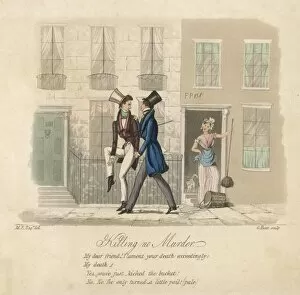Pail Collection (#13)
"Pail: A Journey Through Time and Culture" Step into the world of pails, where their humble presence has left an indelible mark on various aspects of human life
For sale as Licensed Images
Choose your image, Select your licence and Download the media
"Pail: A Journey Through Time and Culture" Step into the world of pails, where their humble presence has left an indelible mark on various aspects of human life. From pollution cartoons to traditional Japanese customs, these versatile containers have witnessed it all. In 1866, a thought-provoking pollution cartoon titled "Deaths Dispensary" depicted a society drowning in its own waste. The pail symbolized hope for change, urging people to take responsibility for their actions. Meanwhile, a poster advertising the publication of Les Miserables showcased the pail as a symbol of poverty and struggle during revolutionary times. It reminded us that even in despair, there is resilience and determination. An advertisement for Morse's distemper featured a decorator lying flat while painting walls with precision. The trusty pail by his side served as both companion and tool, holding paint that would transform spaces into works of art. Traveling eastward to Japan, we encounter the uchimizu tradition—a practice involving washing sidewalks using wooden buckets and ladles. This ritualistic act not only cools down hot summer streets but also represents respect for cleanliness and harmony within nature. Switching gears to indulgence, an advert for Mackeson's Stout enticed beer enthusiasts with promises of rich flavors poured from frothy pails. Cheers were raised worldwide as this stout became synonymous with satisfaction after a long day's work or celebration. Venturing through Amsterdam's Bloemenmarkt flower market reveals vibrant tulips arranged meticulously in colorful buckets. These floral treasures captivate passersby who seek beauty amidst bustling city life—pails becoming vessels filled with joyous blooms. The idyllic village of Draycott introduces Edith Hodgkins—the milkmaid whose daily routine involved skillfully milking cows into her trusty pail. Her dedication ensured fresh dairy products reached countless homes each morning—a testament to hard work sustaining communities.


